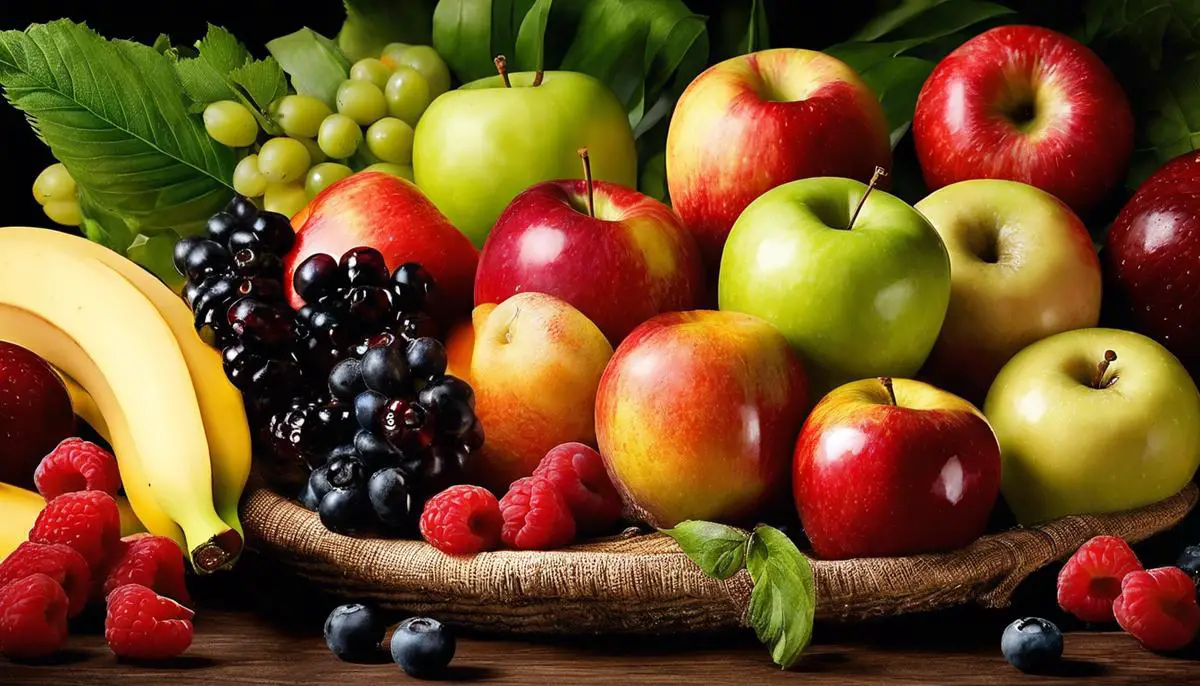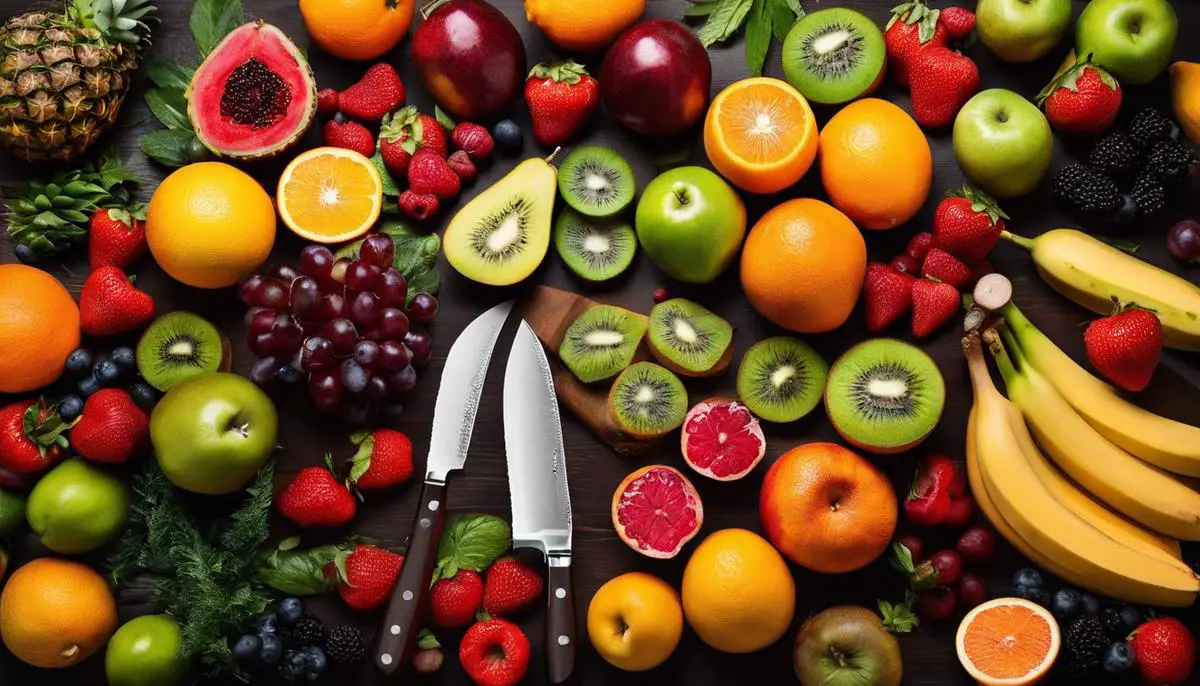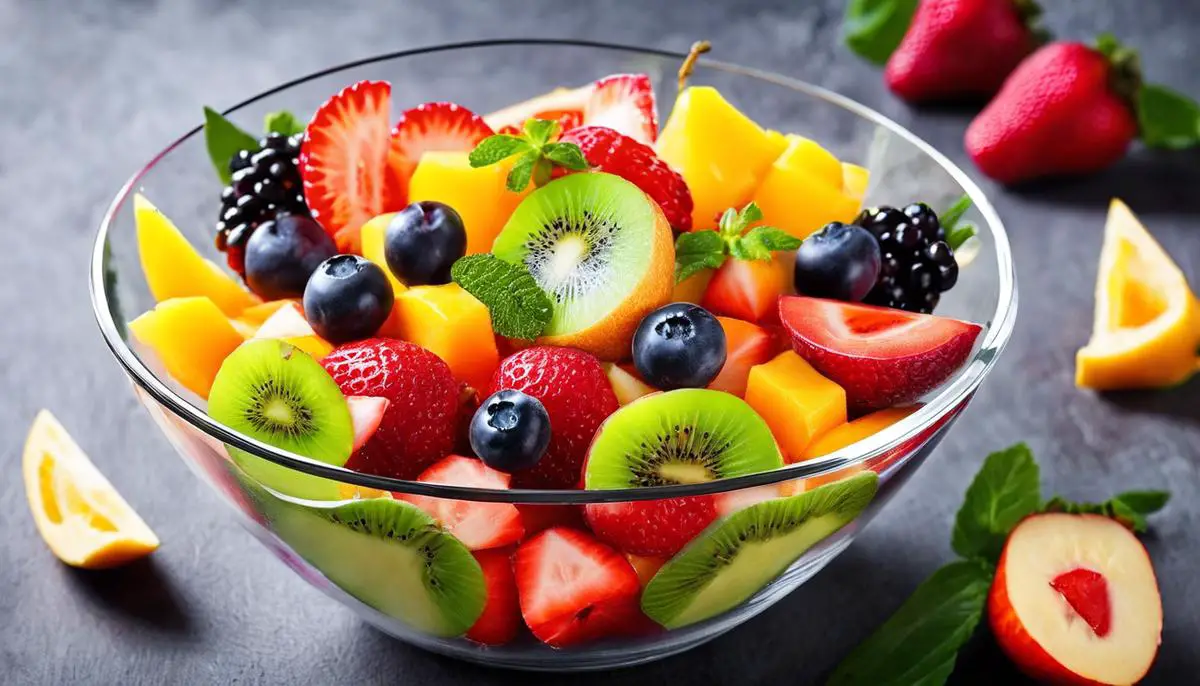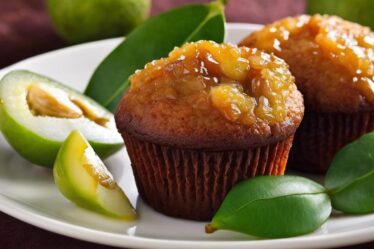
Fruit salad – a simple, vibrant and nutritious concoction, yet so many aspects to consider to create the perfect blend. From selecting juicy, ripe fruits to mastering the art of prepping and cutting them, this process is both a science and an art. Ever held an apple or a bunch of bananas, wondering how to determine their ripeness? Or have you questioned the best way to maintain the vibrant colours and textures of different fruits once cut open? Our discussion ranges from understanding the nuances of choosing and buying fresh, top-quality fruits like apples, bananas, berries, to mastering washing, peeling, de-seeding and chopping techniques that preserve the natural essence of the fruits, awaiting their turn in a salad.
Selecting Fresh Fruits
The Art and Science of Identifying Fresh Fruits
Investing a little of your time in learning the nitty-gritty about identifying fresh fruits can elevate your culinary journey. It’s not just about choosing the ripest apple, it’s also about respecting the artistry of nature and savoring the freshness that only a perfectly ripe fruit can offer. An understanding of what denotes a fresh fruit genuinely celebrates the spirit of culinary exploration!
Firstly, our senses are unfailing in their detailed analysis. Sight, touch, and smell are the primary tools that come into play.
Color can be an insightful indicator of ripeness. Vivid colors often indicate a fruit’s readiness to be eaten. Dull colors, on the contrary, could mean that the fruit is either unripe or overripe. However, beware of beautiful exteriors! Some fruits are ethylene-treated to accelerate color development without actually ripening. So, let’s not simply judge a fruit by its cover.
Next, focus on the texture. A fruit’s inclination towards the softer or harder side often reveals its freshness level. But, remember, a general rule cannot be applied for all fruits. While a soft peach is ripe and ready, a soft mango or apple could be overripe. Thus, knowing the unique textural nuances of different fruits is crucial.
The aroma is another reliable ally in finding the freshest fruits. Fruits like melons, pineapples, and peaches should exude a sweet and tangy aroma when ripe, while others like apples and pears have a more subtle scent. If the smell is too strong, it is likely overripe.
Then there’s the basic physics of weight. The heavier a fruit is in comparison to its size, the fresher it likely is. The weight relates directly to the fruit’s water content, which gradually decreases as the fruit ages.
In the case of citrus fruits, smooth and thin skins with a bit of shine indicate freshness and good juice content. Lethargic-looking fruits with pitting, often lack the refreshing inner content that we’re all on the quest for.
Let’s not forget about the stalks, stems, or crowns in fruits like apples, strawberries, or pineapples. They are excellent indicators of freshness. Brittle stems or discolored stalks may indicate the fruit has been off the tree or vine for a longer time.
Last, but not least, those who are bold can always take the tasting path. Sampling fruits (if permissible) can give a real-time freshness analysis.
But remember, your senses can sometimes be deceiving, particularly when manipulated by unnatural ripening methods. Hence, the most effective way is to combine your sensory judgment with knowledge of how and when the fruit was harvested. It’s always beneficial to buy fruits that are in season and buy local to ensure the least amount of time from tree to table.
To truly appreciate the tantalizing flavors of fresh fruits, we must be willing to understand them better. After all, to turn ordinary kitchen trials into extraordinary experiences, we must get the basics right, and picking the freshest fruits is undeniably one of them.
So, let’s commit to becoming more discerning fruit purchasers; it’s an effortless way to start making more substantial culinary connections! Now, to the market we go!

Prepping and Cutting Techniques
Undeniably, taking the moment to explore and choose fresh fruits for your culinary pursuits is a stage that should not be overlooked. But once your kitchen is brimming with a colorful array of nature’s sweet bouquets, the real fun begins – Prepping and cutting fruits!
Prepping and Cutting Tools
Kitchen tools to prep and cut fruits may vary depending on the fruit’s size, texture, and hardness. A sharp paring knife is an all-around essential tool to have on board. It’s perfect for peeling, pitting, slicing, and coring most fruits. A serrated knife, with its saw-like edge, is ideal for cutting soft and slippery fruits like tomatoes and citrus fruits without crushing them.
When dealing with melons or pineapples, a chef’s knife with its broad and sharp blade comes to your rescue. For dicing small fruits like strawberries, a nice dice cut can make your fruit salad look artful and professional, a sharp utility knife is your best ally.
Beyond knives, a melon baller can create fun, bite-sized pieces perfect for fruit salads, while an apple slicer can cut and core an apple in one swoop, a real time saver. A citrus reamer or a citrus press can help extract every last bit of juice from lemons, limes, and oranges, essential for marinades, flavoring dishes, or creating refreshing beverages.
The Art of Prepping and Cutting Fruits
Before you start, make sure your fruits are clean. Rinse them under running water and gently scrub with a produce brush. For thin-skinned fruits like apples or pears, you can simply pat them dry and start cutting. However, for thick-skinned fruits like melons and citrus, it’s advisable to peel the rind or skin off with a knife or peeler to avoid a bitter taste.
Once you’re ready to cut, secure the fruit on a cutting board. Make sure the cutting board doesn’t slide around by placing a wet towel or a non-slip mat underneath. Start by cutting off a small section from the top and bottom to provide a stable base. Then cut the fruit in half, and from there, you can proceed to slice, dice, or chop according to your recipe demands.
For juicier fruits like peaches or tomatoes, you could blanch them in boiling water for about 30 seconds to 1 minute and then immediately immerse in cold water. This process makes the skin peel off easily, keeping the flesh intact.
In conclusion, the process of prepping and cutting fruits can be as enjoyable as their eventual tasting. The right tools and techniques not only ensure you get the best out of these natural gems, but also invigorate your connection with food. Remember, the kitchen is a place for exploration and creativity, so don’t be afraid to experiment and find joy in each scrumptious slice.

Assembling and Serving the Fruit Salad
In the realm of gastronomic artistry, assembling a fruit salad is a masterclass in weaving together textural layers and symphonies of flavor. The blend of vitality-packed ingredients presents an opulent tableau of taste that salutes the essence of nature’s best offerings.
Once you’ve mastered the art of identifying and procuring the freshest fruits, the journey continues into the domain of their preparation. Mechanisms as vital as the ingredients themselves remain paramount. It’s time to don your apron, wield your kitchen tools, and delve deeper into the realm of fruit salad composition.
The Symphony of Assembly
The joy of creating a fruit salad lies within the selective pairing of flavors, neatly diced and mixed in precise harmony. Begin with a solid base, like sweet, ripe honeydew melon or juicy watermelon, inviting freshness and moisture into the flavor profile. Enhance the ensemble with contrasting characters such as tart berries, nutty bananas, or citrusy oranges.
Progress delightfully into lesser-explored territories, bringing an intriguing twist of the unusual. Why not introduce pomegranates for an exciting burst of juice, or fresh figs for a wholesome texture?
Remember to pay heed to the fruit’s firmness. Softer fruits such as bananas and ripe mangoes work well when combined with firmer fruits like apples or pears, offering a pleasing textural contrast. Think of your fruit salad as an orchestra where each fruit plays an integral role in creating a harmonious grand symphony.
Accenting with Dressings and Toppings
While the fruits are the stars, the icing on this nature’s cake is the creativity of dressings and toppings. Honey, for example, can add a layer of sweetness to more sour fruits. A light sprinkle of cinnamon or mint leaves can provide aromatic highs that tantalize the olfactory sense.
Taking it a notch higher, a squeeze of fresh lime or sprinkling of sea salt can further accentuate the fruits’ natural sweetness. Toppings like toasted coconut shavings, chia seeds, or granola can provide crunchy texture and complementary flavor, welcoming an enjoyable contrast to the softer fruit.
The Grand Unveiling
Presentation plays a sizable role in our eating experience, and fruit salad is no exception. Consider serving in a clear glass bowl or layered parfait style in a glass tumbler. Not only does it elevate the visual appeal, but it allows the vibrant colors to shine through, revealing the fresh fruits’ purity.
In family or social settings, use a large, decorative bowl to showcase the salad’s myriad colors and textures. Add an array of serving spoons, inviting guests to sample as they desire.
Pairing Perfectly
Interestingly, fruit salad holds the key to transcend traditional dessert boundaries. Serve it alongside a dollop of Greek yogurt for a protein-packed breakfast. It can be a refreshing side dish to a main meal or even star in a satisfying, healthy lunch when paired with a bed of leafy greens. The possibilities, indeed, are endless.
Creating a fruit salad is a joyous journey showcasing nature’s bounty in a vibrant blend of flavors and textures. The artful assembly and considered ingredient pairings yield a refreshing dish guaranteed to delight the taste buds and nourish the soul. This is more than just a dish; it’s a joyful exploration, a celebration of culinary creativity, and an ode to gastronomic pleasure. From kitchen to table, the language of love, care, and health is transcribed with every slice and dice. The culinary world beckons; it’s time to start the symphony.

Understating the allure of this rich medley of fruits is not just in knowing how to select and prepare them, but it also lies in the skillful blending and serving process. Equipped with the knowledge to combine these individual components into a beautiful and appetizing ensemble, you’ll become adept at creating fruit salads worthy of any occasion. As nurturers of taste, culture, and health, let us remember to garnish with love, store with care and serve with pride. After all, nothing beats sharing a generously made, appealing, and nutrient-rich fruit salad that not only pleases the palate but also contributes to overall well-being.



